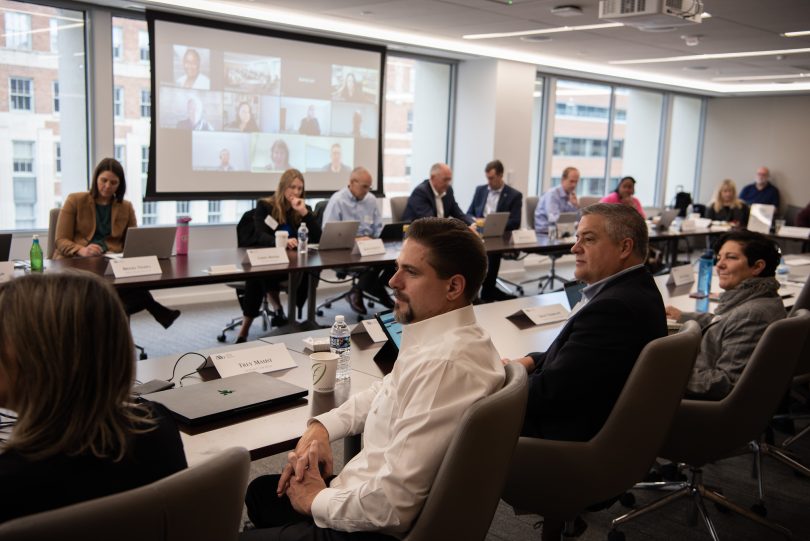[ad_1]
What does the core platforms marketplace look like in the year ahead? Five years after ABA’s Core Platforms Committee kicked off its work, there have been dramatic changes in the financial services technology marketplace.
ABA’s Core Platforms Committee continues to work with community and midsize banks to identify challenges in core banking and find solutions. Recently, to address customer service challenges at certain cores and continue their work of evaluating the core marketplace, the committee met with several cores—including the three largest—as well as some recent and growing entrants in the U.S. market.
Here are five key insights from committee members on core trends in 2023:
1. Cores’ approaches to APIs and open banking differ from provider to provider.
“Open banking” has been a buzzword for well over a decade, but open remains in the eye of the beholder. While cores often use similar language around APIs and open banking, committee members note that at some cores, the openness to solution integration is limited to using the core’s own offerings, while others have embraced the digital potential of the API ecosystem. Approaches to pricing also vary widely. One key thing to watch in core product development is the extent to which open banking marketing matches the open banking reality.
“One of the things that stood out to me was the differences between the core providers we met with,” notes Steve Schieffelin, SVP and head of bank IT business relationship management at Dime Community Bank in New York. “I was surprised at the differences in how and where they are investing in their own technological infrastructure and ecosystems. When combined with their approach, vision and investment in open banking and APIs, I found real differences that I believe most banks don’t believe exist.”
2. Middleware is an increasingly important option for innovation.
In line with the focus on APIs, the Core Platforms Committee is developing resources for banks on the increasingly important middleware sector. “Middleware may be a necessary enabler of innovation, particularly if sole-sourcing innovation to your bank’s core is not possible or if you are pursuing strategies that are not directly down the fairway of capability for your bank’s core,” notes Trey Maust, executive chairman and co-founder of Lewis and Clark Bank in Oregon City, Oregon. These solutions stand in the gap, connecting a bank’s core with a suite of solutions.
3. Legacy cores are aware of their customer service difficulties and are planning to respond.

Core Platforms Committee Past Chair D.J. Seeterlin (center) and Chair Kim Kirk (right) lead the fall meeting of the administrative committee.
In 2022, many banks experienced major customer service challenges from their core providers. With demand for tech talent still hot in the first part of the year—before the tech sector began rounds of layoffs late in the year—some cores found themselves short-staffed, and timelines for ticket response and projects got unacceptably long for many bankers.
Cores with which the committee raised customer service problems acknowledged their challenges and outlined their plans to improve performance. Real improvements in customer support are likely to take some time to impact bankers, though.
“I was very surprised by the diversity of responses and plans and that each vendor had a somewhat unique interpretation of the issues,” says Steve Lewis, CEO of Thomaston Savings Bank in Thomaston, Connecticut. However, in a preview of survey research scheduled to be released at CoreConnection during the ABA Conference for Community Bankers, frustration with cores continues to simmer, with half of banks with two to four years left on their core contract considering a conversion..
4. Cores where the CTO sets strategy may have an advantage.
Some of the legacy cores don’t have a single corporate CTO setting strategy across their products—which may leave them behind the curve in keeping up with the digital future. Cores where CTO responsibility is split across products may be hampered, instead focused on needing to standardize across platforms rather than focus on comprehensive integration capabilities. “For a technology company, that is surprising to me,” says D.J. Seeterlin, chief innovation and strategy officer at Kilmarnock, Virginia-based Chesapeake Bank and immediate past chair of the Core Platforms Committee. “I think this gives those companies an advantage as they have a cohesive approach that the company can make big bets on for the long-term strategy.”
For committee members, some providers’ digital transformation strategies were a proof point of the committee’s work. “If just two of the cores are making major investments like these three years after we met with them to tell them they needed to improve, then then that tells me our message was heard, and our work is paying off and we are moving the dial for the industry, ”notes ABA Chair-Elect and past Core Platforms Committee chair Julieann Thurlow, president and CEO of Reading Cooperative Bank in Reading, Massachusetts.
5. Legacy cores retain some advantages for “core” functionality.
Customer service issues aside, cores can be useful for their “core” functions. In its prior work, the committee identified core strategies like “best of breed” or “sidecar” cores that employ a legacy core for ongoing general ledger and system-of-record functionality but that allow banks to tap into novel providers for other functions. Committee members believe that many banks will continue to find inherent value in relying on established providers for a system of record while Innovating around the edges.
“While innovation may be a challenge when relying on your core, there are benefits that should not be overlooked by keeping critical functions at an incumbent core,” says Trey Maust, noting that the major core providers understand and live under a regulatory umbrella, are subject to examination, have been stress-tested and are secure. “Essentially, they act as solid foundations that can be built upon.”
[ad_2]
Source link








